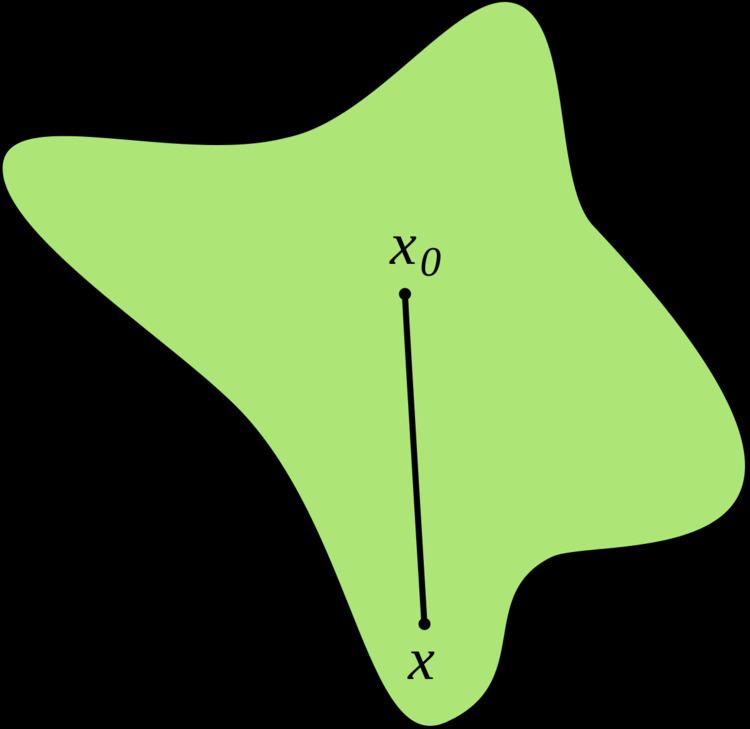 | ||
In mathematics, a set S in the Euclidean space Rn is called a star domain (or star-convex set, star-shaped set or radially convex set) if there exists an x0 in S such that for all x in S the line segment from x0 to x is in S. This definition is immediately generalizable to any real or complex vector space.
Contents
Intuitively, if one thinks of S as of a region surrounded by a wall, S is a star domain if one can find a vantage point x0 in S from which any point x in S is within line-of-sight.
Examples
Properties
References
Star domain Wikipedia(Text) CC BY-SA
